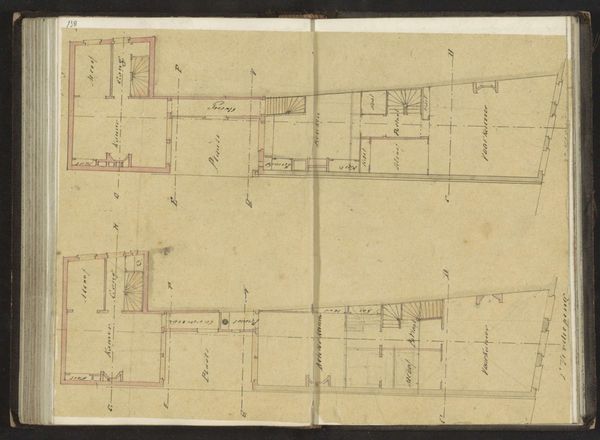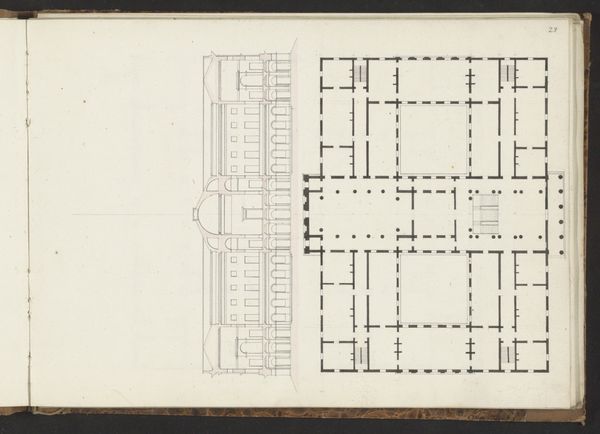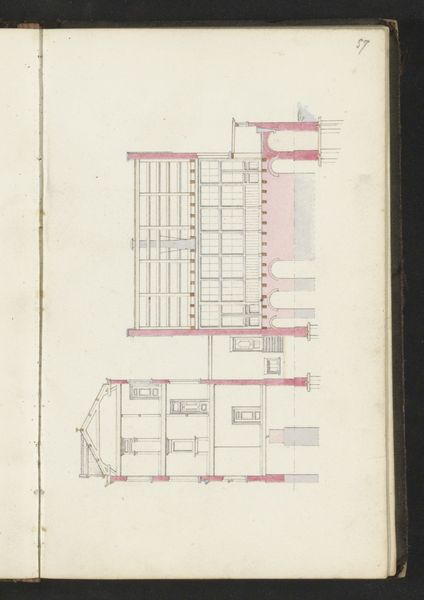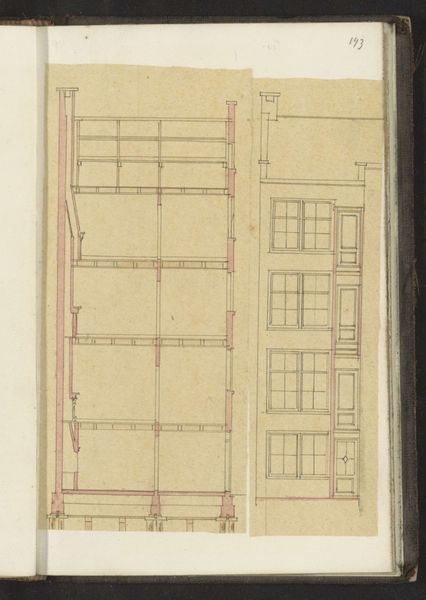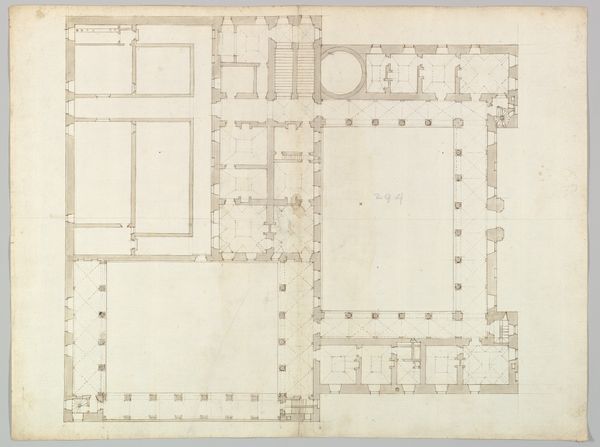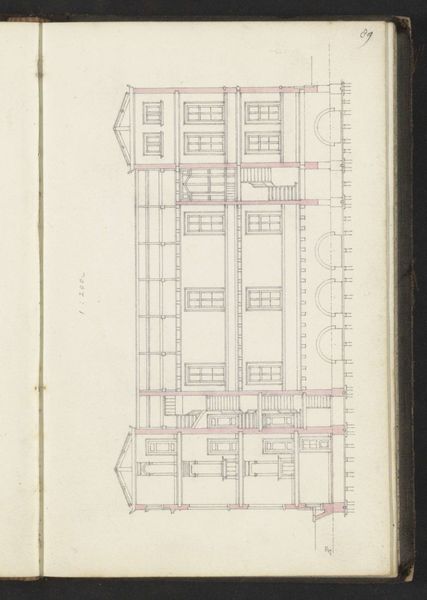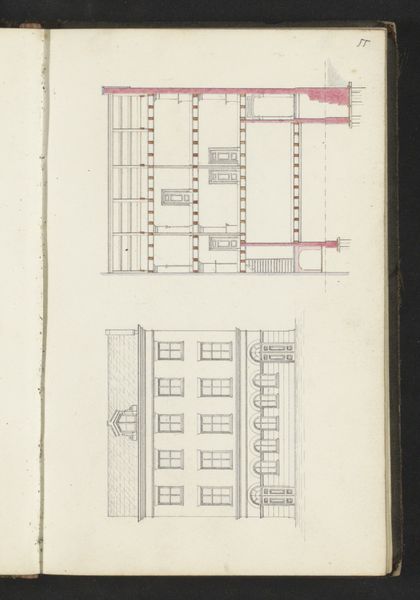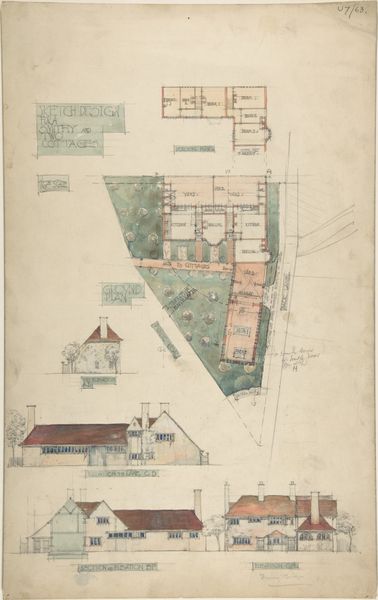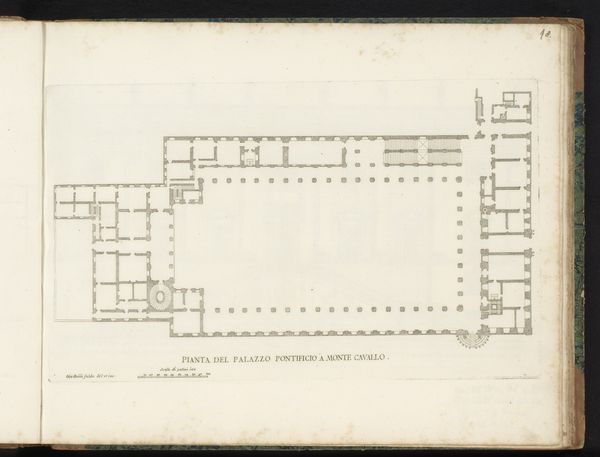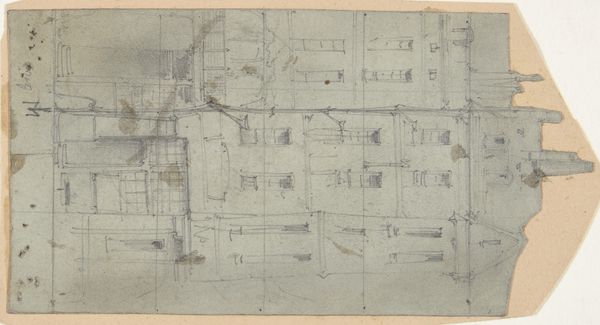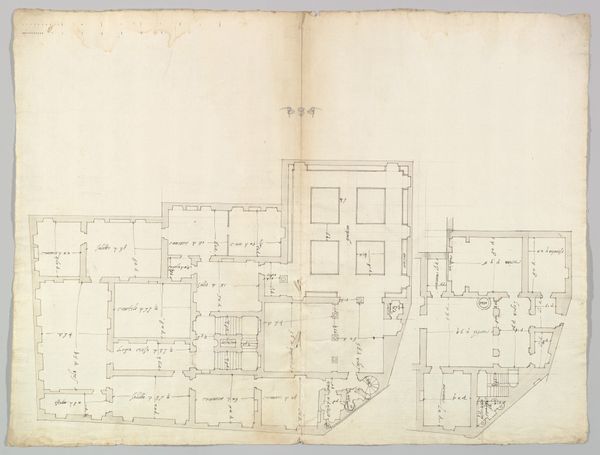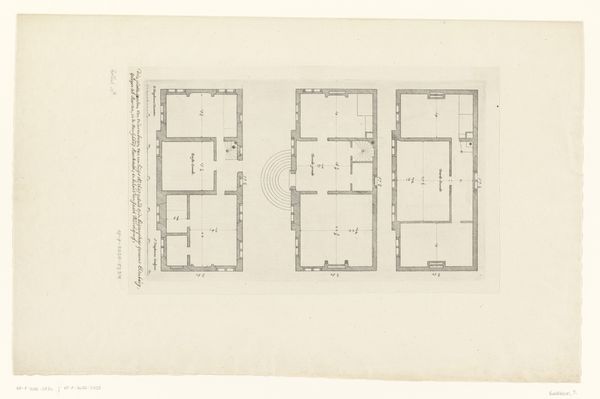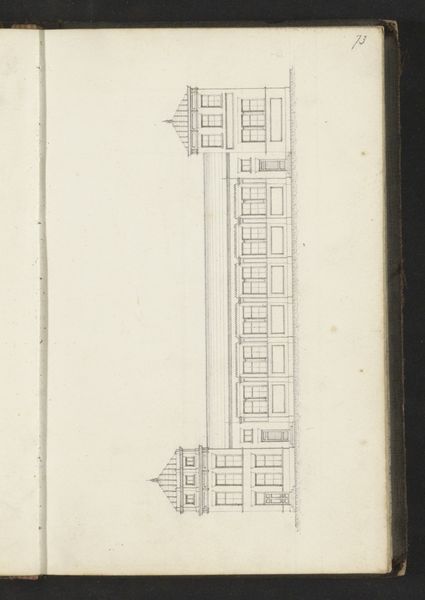
drawing, paper, architecture
#
architectural sketch
#
drawing
#
paper
#
geometric
#
line
#
architecture drawing
#
architecture
#
realism
Copyright: Rijks Museum: Open Domain
Curator: Before us is "Doorsnede van een achter- en voorgebouw," an architectural drawing executed circa 1864 by Willem Springer Jr. It's a sectional view rendered on paper, presenting both the front and rear structures of a building. What strikes you upon first viewing, Editor? Editor: Well, first, a slight chill—like looking at the blueprint for a dollhouse where the inhabitants are forever absent. There's an elegance to the linear precision, yet it hints at the invisible stories those rooms contain. What stands out to you, considering the form? Curator: The rigorous application of line is paramount. Notice how Springer employs varying line weights not only to delineate the structure's skeletal frame, but to articulate spatial recession. The use of faint gridlines also suggests a systematic methodology. It invites a deeper examination into 19th-century architectural planning. Editor: Absolutely! And the notes jotted on there - numbers all over, suggesting heights? But beyond that technical element, do you not feel a tangible wistfulness emanating from it? These aren't just lines; they're hinting at rooms half-inhabited with memories. Imagine someone looking at this plan one hundred and sixty years ago, with hopes and fears of something tangible coming of it. Curator: The formalism rejects purely speculative emotional projection, of course. However, to speak directly, I concede that these technical, utilitarian elements generate an aesthetic artifact: it's through these structural lines that a peculiar sense of space emerges, offering viewers a lens through which to appreciate the design of 19th century structure. Editor: An artifact hinting at bigger mysteries. When looking at it, the lack of human elements makes it resemble some sort of riddle, a ghost of a house that someone wanted to bring into being. The bare minimum, structurally there, emotionally distant and coolly precise. Curator: Indeed. The elegance of pure design captured for us. Editor: Leaving much to consider and reimagine about it.
Comments
No comments
Be the first to comment and join the conversation on the ultimate creative platform.
